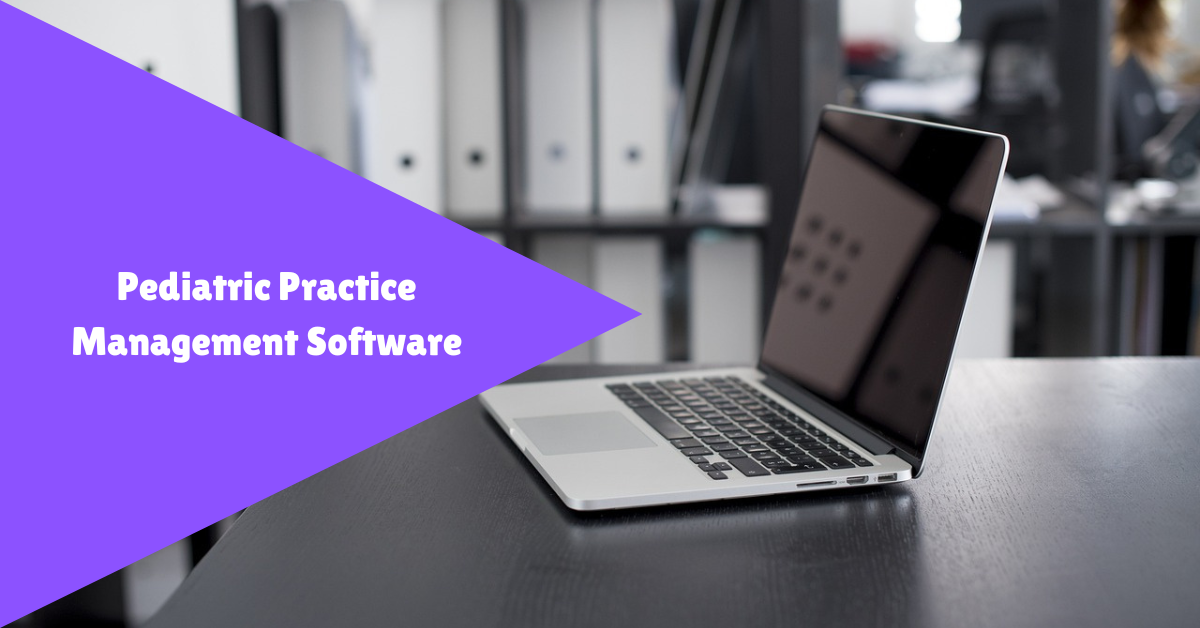In today’s fast-paced healthcare environment, pediatric clinics face unique challenges that demand specialized digital solutions. From managing immunization records and growth charts to coordinating with parents and ensuring child-friendly communication, pediatricians need more than just a generic Electronic Medical Record (EMR) system—they need purpose-built pediatric practice management software.
This article dives deep into the world of pediatric practice management tools, explaining what they are, their must-have features, benefits, and how to choose the best one for your clinic in 2025.
Ready to take the first step?
We’ll assist you through every step.

What Is Pediatric Practice Management Software?
Pediatric practice management software is a digital solution designed to streamline administrative and clinical operations within a pediatric healthcare setting. It combines electronic health records (EHR), scheduling tools, billing solutions, and patient communication features into one integrated platform.
Unlike general medical software, pediatric-specific systems address child health needs like:
- Immunization schedules
- Growth monitoring (height, weight, BMI percentiles)
- Age-specific screening tools
- Parental/guardian access
- Vaccine inventory management
Why Pediatric Clinics Need Specialized Software?
Pediatrics is not just another branch of medicine—it comes with its own set of workflows and responsibilities. Generic EMR systems may not meet pediatricians’ needs effectively. Here’s why a specialized solution matters:
- Age-Based Templates: Children require different exams and treatments depending on their age. Pediatric software offers templates that reflect this.
- Immunization Tracking: Keeping up with vaccine schedules is critical in pediatrics. A good system provides automatic reminders and compliance checks.
- Parental Communication: Pediatric clinics deal with parents or guardians more than the actual patients. Software must support family charting and multiple-user communications.
- Growth Charts & Percentiles: Tracking physical development over time is vital. Pediatric EMRs offer visual growth charts aligned with CDC/WHO standards.
- School & Camp Forms: Automating paperwork for schools, sports, and camps saves time and improves satisfaction for parents.
Core Features of Pediatric Practice Management Software
When evaluating pediatric practice management software, here are the essential features you should look for:
1. Integrated Pediatric EMR
An integrated EMR module designed for pediatrics should include:
- Pre-built pediatric exam templates
- Age-specific developmental milestones
- Vaccination history and reminders
- School and daycare forms
2. Appointment Scheduling
Efficient scheduling reduces wait times and missed appointments:
- Color-coded calendar views
- Online appointment requests
- Automated appointment reminders
- Waitlist management
3. Medical Billing & Coding
Pediatric billing includes well visits, vaccines, sick visits, and developmental screenings:
- Built-in CPT and ICD-10 pediatric codes
- Claim scrubbing and denial management
- Automated eligibility verification
- Insurance & patient billing integration
4. Parental Access & Patient Portal
Parents want visibility into their child’s health:
- Secure messaging with providers
- Access to immunization records
- Online billing and payment options
- Appointment and medication reminders
5. Growth Charts & Development Tracking
Charts that track:
- Height, weight, and BMI percentiles
- Head circumference for infants
- Visual tools for clinicians and parents
6. Telehealth Integration
Telemedicine is crucial post-pandemic:
- Secure video consultations
- Pre-visit questionnaires
- Remote monitoring tools
7. Reports & Analytics
Track practice performance, billing, and patient outcomes:
- Immunization coverage reports
- Missed appointments data
- Revenue cycle analytics
Benefits of Using Pediatric Practice Management Software
1. Streamlined Operations
Automation of daily tasks like billing, scheduling, and charting reduces administrative burden and allows staff to focus on patient care.
2. Improved Clinical Accuracy
Pre-set templates and pediatric-specific tools help clinicians deliver consistent, high-quality care.
3. Better Patient Engagement
Portals, reminders, and online forms make it easier for parents to stay involved and informed.
4. Faster Reimbursement
Accurate coding and electronic claims reduce denials and speed up payments.
5. Regulatory Compliance
Ensure adherence to HIPAA, vaccination mandates, and pediatric care standards with built-in checks.
How to Choose the Right Pediatric Practice Management Software?
When selecting software, consider the following:
1. Specialization in Pediatrics
Ensure the platform is not a generic EMR with “pediatric options” but rather built from the ground up for child healthcare.
2. Scalability
Whether you’re a solo practitioner or a large pediatric group, the system should grow with your needs.
3. Cloud-Based vs On-Premise
Cloud-based solutions are easier to maintain, offer remote access, and have lower upfront costs.
4. Integration Capabilities
The software should integrate seamlessly with:
- Labs
- Pharmacies
- Immunization registries
- Clearinghouses
5. Training and Support
Look for vendors offering:
- Onboarding assistance
- 24/7 customer support
- Pediatric-specific training
Emerging Innovations in Pediatric Practice Management Software (2025)
As pediatric healthcare evolves, so does the technology that supports it. Beyond traditional EMR and billing functionalities, modern pediatric practice management systems are embracing cutting-edge innovations to enhance both clinical outcomes and patient engagement. Here are five key trends transforming pediatric software in 2025:
1. AI-Driven Clinical Decision Support
Advanced AI algorithms now assist pediatricians with real-time diagnosis suggestions based on symptoms, lab results, and patient history. These tools are especially helpful for identifying early signs of developmental delays, rare diseases, and medication dosing anomalies in children.
2. Behavioral and Developmental Screening Modules
New modules allow clinics to conduct routine behavioral, emotional, and developmental assessments during visits. These are integrated directly into the EHR, enabling early intervention for conditions such as ADHD, autism spectrum disorders, and anxiety.
3. Gamified Child Engagement Tools
To reduce anxiety and improve cooperation during clinic visits, many platforms now include gamified experiences tailored for children. From interactive check-in kiosks to reward-based health tracking apps, gamification keeps young patients engaged and improves the overall clinic experience.
4. Multi-Parent and Guardian Communication Features
Modern systems now support multiple caregivers per patient, allowing both parents, guardians, or even schools to receive tailored communication—appointment reminders, vaccination records, and follow-up instructions—without breaching privacy protocols.
5. Integrated Preventive Care Campaigns
Many pediatric EMR systems offer tools to launch preventive health campaigns (e.g., flu shots, seasonal checkups, nutrition tips). These are automated via SMS, email, or portal notifications, increasing patient compliance and boosting clinic revenue.
Pediatric Software and Data Security
Handling sensitive child health data demands rigorous data protection. Pediatric practice software should offer:
- HIPAA-compliant encryption
- Role-based access for staff
- Secure cloud backups
- Regular system audits
Future Trends in Pediatric Clinic Software
1. AI & Predictive Analytics
AI is being integrated to flag early signs of developmental delays and forecast care needs.
2. Voice Commands
Voice-enabled charting reduces screen time for providers and enhances the patient experience.
3. Mobile Accessibility
Apps for doctors and parents allow mobile scheduling, communication, and alerts.
4. Remote Monitoring
Wearables and connected devices track vitals in young patients with chronic conditions.
Conclusion
As pediatric clinics strive to offer high-quality, child-centric care, adopting the right pediatric practice management software is essential. From automating billing and managing immunizations to enhancing parental engagement and enabling telehealth, these systems offer a powerful edge.
Whether you’re launching a new practice or upgrading your existing one in 2025, choose software that not only streamlines operations but also grows with your clinic’s future.
Looking to digitize your pediatric clinic? Kiddoklinik offers pediatric-friendly clinic management solutions tailored to your needs. Contact us to schedule a demo and revolutionize your pediatric practice today!
FAQs
1. What is the best practice management software for pediatric clinics in 2025?
The best pediatric practice management software in 2025 depends on your clinic’s size, budget, and workflow. Top options offer features like immunization tracking, growth charts, telehealth integration, and parental communication tools. Always choose a system built specifically for pediatrics to ensure it meets age-specific clinical and administrative needs.
2. How does pediatric practice management software improve clinic efficiency?
Pediatric software streamlines daily operations by automating scheduling, billing, patient records, and immunization tracking. It reduces administrative workload, minimizes billing errors, and enhances communication with parents, leading to better patient outcomes and improved clinic productivity.
3. Is pediatric EMR software secure and HIPAA-compliant?
Yes, reputable pediatric EMR systems are designed with data security in mind. They are HIPAA-compliant, include encryption, role-based access controls, and secure cloud backups to protect sensitive child health data and ensure patient privacy.



